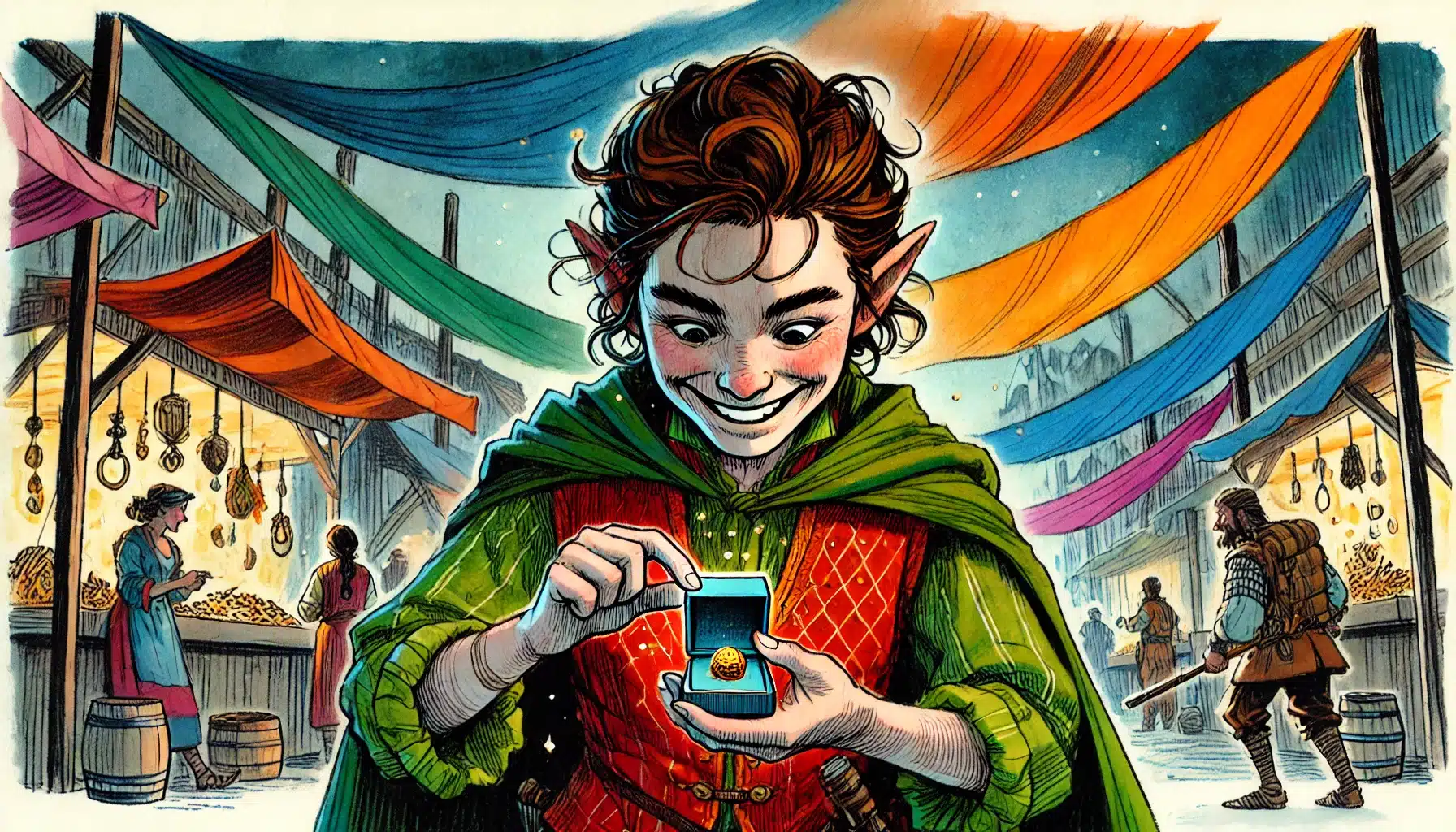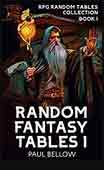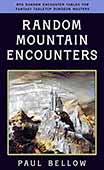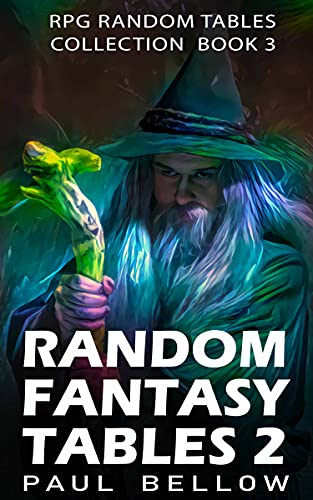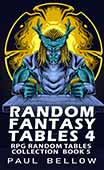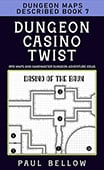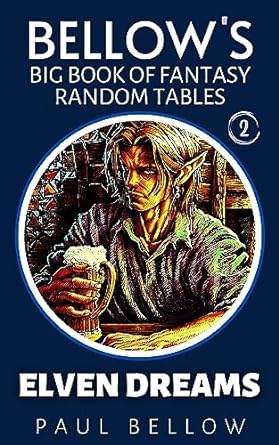The shriek of a thrown plan echoes through every DM’s soul at least once a session. You’ve spent hours crafting intricate encounters, fleshing out atmospheric backdrops, and foreshadowing devastating plot twists—only for your adventurers to interrogate the barmaid you named in passing, wander into the haunted woods two levels too early, or decide that launching the mayor’s prized goose from a catapult is top priority. If you feel that spine-chilling freeze when players go “off the rails,” take heart: they’re not sabotaging your work—they’re inviting you to deeper collaboration.
Moments like these aren’t disasters. They’re your chance to let the world breathe. Improvisation isn’t a desperate scramble; it’s your secret weapon, a spotlight illuminating the hidden fun of collaborative storytelling. Imagine the table leaning in, wide-eyed, as you spin drama from thin air. That thrill is the pulse of tabletop RPGs—the wild, sickle-curve path where every session becomes unique.
Improvisation acts as a safety net, not just cushioning your campaign from derailment but bouncing it higher than you could’ve predicted. When you release the vice grip on your notes and embrace spontaneity, you invite players to take ownership. Suddenly, they’re not just watching your story unfold; they’re co-creating it in real time. That’s where the magic lives.
Above all, know this: no Dungeon Master is immune to those “Uh-oh, now what?” moments. But with the right mindset and a handful of nimble tools, you can turn any surprise into a highlight—the wild plot twist nobody could’ve prepped for, the detail that sticks in players’ memories long after the dice cool. Improvisation isn’t just damage control; it’s an art form. And you, brave DM, are ready to wield it.
The Mindset of a Reactive Dungeon Master
When your plot unravels beneath the boots of your adventurers, the single most valuable stance is flexibility. Let go of perfectionism. The magic happens when you greet twists not with panic, but with a wry grin. Treat each unexpected decision as a spark—an excuse to say “Yes, and…” instead of “No, but…” Your table will feel the difference, and so will you.
Embrace curiosity over control. A good DM doesn’t have to know everything in advance. Treat your players’ wild choices as creative gifts; their ideas are seedlings, and your job is to help them flourish. If they insist on befriending the goblin chef or believe the city’s fountain must be a portal, let your delight show. Their offbeat actions fill your world with unplanned depth and color.
Try my AI Tabletop RPG generators...and an extensive library of content!
Most of all, remember: your authority doesn’t stem from infallible knowledge, but from the willingness to listen, respond, and co-create. The illusion of omniscience is unnecessary; a nimble Dungeon Master is one who reacts with grace—pausing, considering, and, if need be, rolling with whatever wild magic the players conjure. Let yourself be surprised. That’s where the game lives.
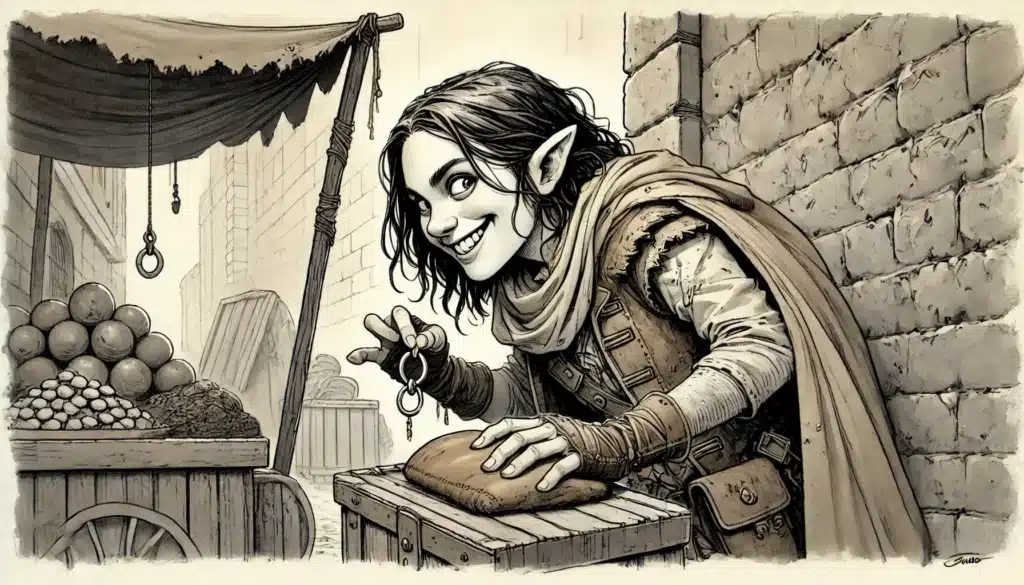
Keep a Mental Toolkit, Not a Script
Improvisation isn’t an empty leap—it’s a practiced skill bolstered by a mental grab-bag of reusable tools. This is less about memorizing answers and more about having “brain snacks”: a handful of character quirks, vague town names, recurring visual details, and fallback motives, always ready to deploy. When you’re surprised, don’t panic. Rifle through your toolkit. Find something that fits.
NPCs are your first line of defense. A half-dozen voices or speech patterns—clipped and formal, nervous and stuttering, bold and blustery—give every vendor and villain an instant hook. Likewise, modular locations—generic but evocative inns, dungeons, and crossroads—can be reskinned endlessly. That shadowy alley? It’s always there, ready to become important at a moment’s notice.
Keep your world’s factions and rumors fuzzy at the edges. Maybe the merchant’s guild was a single note in your prep. Tonight, it can be a major player, motivated by a simple scrap of greed, revenge, or secrecy. Visual motifs—rattling windchimes, pools of colored light, chipped statues—are like Lego bricks. Drop one in, and it creates instant atmosphere or clues, no elaborate backstory required.
⚔️ Fantasy RPG Random Tables Books
Make life as a Gamemaster easier…
If you play Dungeons & Dragons, Pathfinder, or other fantasy RPGs, this
RPG random tables series
is packed with encounters, NPCs, treasure, and more. Available in eBook or print—either way, you’ll have a wealth of adventure ideas at your fingertips.
Your toolkit should run deep, but it doesn’t need to be exhaustively detailed. Think templates, not blueprints. With a few dials you can turn—personality, appearance, mood, motivation—you can instantly spin something vibrant enough to hold the table’s attention, buying you time to weave deeper connections later. Improvisation, after all, is about creating momentum, not perfection from the start.
Mental Toolkit Components for DMs
- 6–10 generic town/village names (e.g., Ravenholt, Emberfield, Willow’s Rest)
- NPC catchphrases (“By the gods, not again!” “Mind yer own coinpurse.”)
- Simple NPC motives (greed, love, fear, ambition, curiosity)
- Modular dungeon room blueprints (collapsed hallway, statue room, trapped pantry)
- Visual motifs (flickering lanterns, a blood-red moon, drifting cinders)
- 8–12 fantasy shop names and specialties
- Recurring animal companions (muttering crow, sly fox, jittery mouse)
- Weather patterns that evoke mood (sudden drizzle, oppressive heat, howling winds)
- Default monster reactions (protect territory, bargain, flee, stalk)
- Hallmarks of different regions (dialects, foods, trade goods)
- 10–15 quick NPC names, both common and exotic
- Random street events (market brawl, parade, lost child, escaped livestock)
- Mysterious trinket ideas (whistling coin, shattered mirror shard, iron puzzle box)
- Mapless encounter scenarios (ambush on a rope bridge, flooded crypt, foggy graveyard)
- Reusable plot hooks (rumors of a curse, missing heirloom, secret tunnels beneath the town)
You don’t become a master improviser overnight. The real trick lies in practice: try a few minor off-the-cuff twists each session and see what delights your players. Even the roughest ad-libs can spark inspiration or become campaign gold further down the line.
Remember, your goal isn’t frictionless perfection. It’s depth and immersion—a world that feels like it’s alive, reacting to the curious pokes and prods of your players. Even a partially improvised scene can become the legendary moment everyone remembers.

Use Player Expectations to Build On the Fly
Here’s a secret: your players are always telling you what they’re looking for, shaping the narrative with their hunches, speculations, and offhand jokes. Instead of constantly pushing them toward your planned story, flip the script: listen for their expectations, and use them as the scaffolding for what comes next.
When the party starts whispering about the town guard’s odd insistence on paperwork, or suspects the gruff innkeeper is hiding something, take notes—even if you had nothing planned. Nodding along, you can take a glimmer of idea, a half-joked suspicion, and make it suddenly, dramatically true. Their wild theory? It’s canon now. That is “the plot.”
Reacting in this way does more than buy you time. It fosters the illusion—no, the reality—that your world is dynamically alive. Nothing feels more magical to a group than hearing their theories echoed in the world, their curiosities deepening the plot. Suddenly, every offhand remark is a potential clue, every misconception a seed for intrigue.
Adopt the “Yes, you’re onto something…” mindset and watch your players light up. If someone wonders aloud whether their failed spell was a sign from their god, consider leaning into divine intervention. Take their unintentional guesses and weave them forward, turning their puzzle pieces into a cohesive mosaic. In the process, you’re not just running a game—you’re reading the room with the agility of a master storyteller.
Player-Driven Improvisation Hooks
- Assuming a shopkeeper is a spy working for a rival faction
- Interpreting a wild animal’s behavior as a supernatural omen
- Misidentifying an NPC’s regional accent as evidence they’re undercover
- Mistaking a mundane relic for a key to a larger mystery
- Reading a monster’s retreat as a call for reinforcements
- Treating a failed persuasion attempt as a veiled threat
- Thinking an unremarkable alleyway is a secret entrance
- Believing a side character’s allergy symptoms are the result of a curse
- Assuming two unrelated NPCs are secretly related or lovers
- Interpreting a strange smell as a sign of magical corruption
- Guessing that a festival is a cover for illicit activity
- Treating a random weather shift as a portent of prophecy
- Jumping to the conclusion that the tavern bard is a legendary hero in disguise
- Treating a random event (like a coin toss) as a critical turning point
- Deciding the mayor’s irritation is linked to a deeper conspiracy
By validating and building off these expectations, you empower your players. They feel clever—like they’re uncovering secrets and influencing the story for real, not just beating up bad guys or buying gear.
More importantly, the narrative stays tightly woven, even when its fibers are spun out of thin air. Their engagement turns to investment; investment becomes immersion. Improvisation isn’t a jumble of disjointed moments—it’s the thread stitching the campaign into a living tapestry.
Improvise with Structure in Mind
Improvisation doesn’t mean chaos. The fastest way to make your ad-libbed scenes feel compelling is to anchor them to a simple, familiar structure: hook, twist, consequence. Whether your location is mapped or made up, rhythm and escalation matter more than encyclopedic lore.
Start each emergent scene with a juicy hook—a strange sight, a desperate plea, or unguarded wealth. Let curiosity pull the party in. Once they’re invested, introduce a twist or complication. Perhaps the simple job isn’t what it seems, the ally has a secret, or the danger isn’t as obvious as it looks. Finally, make sure something changes as a result—a concrete consequence, good or bad, that pushes the story forward.
⚔️ Fantasy RPG Random Tables Books
Make life as a Gamemaster easier…
If you play Dungeons & Dragons, Pathfinder, or other fantasy RPGs, this
RPG random tables series
is packed with encounters, NPCs, treasure, and more. Available in eBook or print—either way, you’ll have a wealth of adventure ideas at your fingertips.
This three-beat structure works everywhere: behind closed tavern doors, in forgotten crypts, or during a street chase you improvise on the fly. You don’t need elaborate notes to offer tension and payoff. Instead, trust the cadence—conflict, revelation, change. It helps both you and your players sense where the scene is going, even when specifics are murky.
If you need a hand mid-session, keep a cheat sheet of possible situation types, twists, and consequences for inspiration.
| Situation Type | Possible Twist | Impact on Story |
|---|---|---|
| Town Market | Merchant recognized PC as outlaw | Party must escape or negotiate |
| Ambush in Forest | Enemy wants to parley, not fight | Potential new ally/enemy |
| Bar Brawl | Local celebrity steps in to help | Unexpected favor or debt |
| Lost Cat Quest | Cat is magical familiar in disguise | Opens lead to wizard patron |
| Mysterious Stranger | Actually a rival in disguise | Seeds future confrontation |
| Ruined Temple | Ghost offers information if helped | New questline unlocked |
| Haunted Inn | Spirit attached to an item PC holds | Item becomes a plot point |
| Guard Interrogation | Guard secretly sympathetic | Can acquire inside info |
| Weather Change | Storm hides larger threat approaching | Emergent danger escalates |
| Ship Voyage | Crew mutinies halfway through | Split-party or shipwreck arc |
The details can be rough. But as long as the beats—hook, twist, consequence—are clear, players will feel satisfied. They know their actions move the narrative, not just ping it.
Loose ends or minor contradictions are rarely what your table remembers. What does matter is the energy, the sense of flow, and the palpable feeling that something big is always just a few decisions away.
Build the World Sideways, Not Forward
When improvisation calls, don’t just fast-forward your campaign plot. Think laterally—let the players’ actions generate branches, new places, new faces, and unexpected rivalries. The world doesn’t just reveal what comes next; it swells in every direction.
Sideways worldbuilding means treating every impulsive decision as an opportunity to expand context, not just advance your agenda. If they decide to hang out with the city’s beggars, let those characters spin off into their own subplot. If they fixate on a mysterious tree, invent a picnic tradition around it—or a half-remembered festival. Every detail is a door.
Encourage yourself to seed rumors, hints, and kinks in setting details. When an NPC bartender mentions her cousin who “joined a cult up north,” be ready to flesh out that cult, or the town where it’s based. When players joke about the land’s weather reacting to their backstories, maybe it literally does. These sideways threads make the world feel boundless, untidy, and real.
You don’t have to resolve every thread you drop. Some can be flavor, others can snowball if players tug on them. That unpredictability is what makes the campaign feel organic, not railroaded. The best improvisers treat this as “building texture”—the illusion that every corner hides another story.
Sideways Worldbuilding Prompts
- A rumor overheard in a tavern about haunted ruins “just outside town”
- An offhand NPC mention of a festival unique to this region
- Weather phenomena that directly mirrors a PC’s mood or backstory
- A child’s doodle that matches a party member’s sigil
- The medallion an NPC wears is identical to one in a PC’s possession
- A wanted poster showing a blurry, yet familiar, PC likeness
- Local folklore about a beast that’s “never been caught on record”
- An old friend of a rival appears, seeking information
- Empty streets during market hour—what’s spooked the townsfolk?
- A bard sings a ballad about deeds only the party would know
- The local currency depicted with the visage of a forgotten god
- A letter delivered to the wrong party—sealed with a strange insignia
- The color of the sunrise is rumored to predict who will die in town that day
Improvisation is live co-creation, not just a patch for when things get weird. Your players will treat even the smallest threads as meaningful—they’ll chase them, pull on them, and sometimes weave them into their own arcs.
Relish the unpredictability. You’re not losing control; you’re opening doors you never would have drawn on your own. That’s how memorable worlds are born.
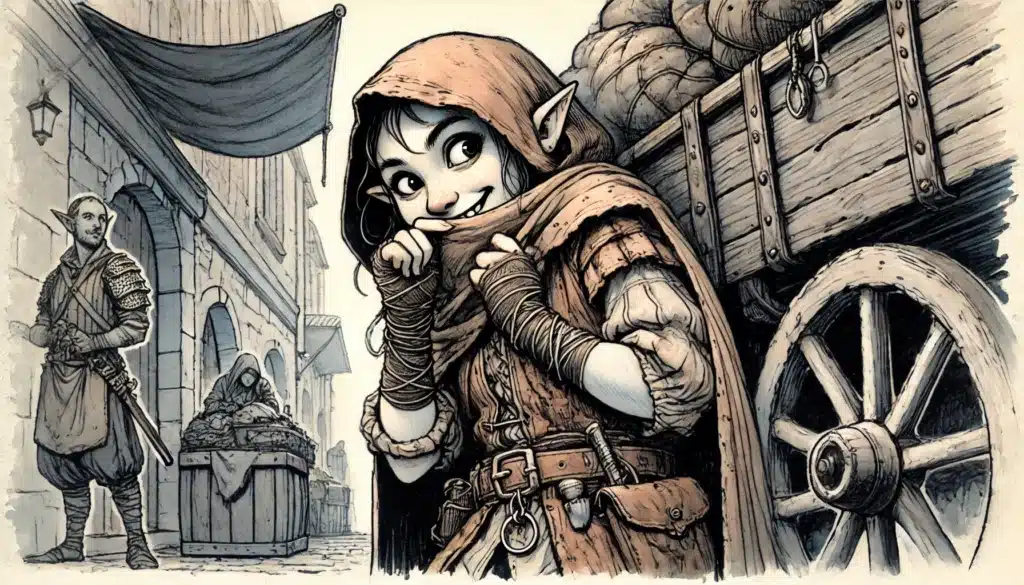
Tools and Prompts to Keep You Improvising Smoothly
Even masters of improv benefit from a little scaffolding. Physical and digital aids—random tables, NPC cards, name generators—act as your sidekicks, providing inspiration or a lifeline when the pressure is on. The right tool can turn “Uh oh, what now?” into an immediate, confident response.
Random generators (digital or printed) are incredibly useful: ten dice rolls later and you’ve got names, backgrounds, motives, even town events. NPC decks or stacks of index cards give instant personalities, mannerisms, and quirks—a lifesaver when the players corner “some random guard.” Prepped lists for towns, dungeons, or complications allow you to paint in broad strokes, filling spaces with color even when the architecture is ad-libbed.
Don’t worry about using every tool at once. Instead, curate a small collection—your favorite app, a handful of random tables, maybe a printout of dungeon layouts and fantasy names. Keep them close at hand and you’ll always have a jumping-off point, never at a loss for inspiration.
| Tool Type | Example Resource | Best Use |
|---|---|---|
| Name Generator | FantasyNameGen | Instant NPC/location names |
| NPC Deck | Paizo Face Cards | Visual and personality cues |
| Encounter Table | Donjon Random Encounters | Filling random events/travel scenes |
| Map Generator | Dungeon Scrawl | Quick dungeons/overland maps |
| Plot Twist Table | DM’s Guild Plot Twist PDF | Surprising story beats |
| Town Generator | Watabou Medieval Fantasy | Creating settlements on the fly |
| Rumor Table | Reddit r/d100 | Flavorful worldbuilding hooks |
| Motive Generator | LitRPG Reads NPC Motives | NPC depth and instant conflict |
| Weather Generator | The Weather Generator | Atmospheric detail |
| Item Table | Trinkets by Roll & Play | Quick loot ideas or quest items |
| Quest Hook Table | Kobold Press Tables | Spontaneous adventure starters |
| Soundscape App | Syrinscape | Immersive background ambiance |
Your aids are prompts, not chains. Use them as idea firestarters, not rules tablets. The more you practice pulling from your kit, the more seamless your improvisation becomes.
When in doubt, flip open your cheat sheet and trust that the next spark—whether a name, a storm, or a misplaced letter—will be just enough to keep your table spellbound.
Final Thoughts on Embracing the Chaos
Improvisation isn’t about survival; it’s about shining in the unpredictable sprawl of collaborative play. Every time you roll with a curveball, you affirm your table’s creativity—and your own confidence grows. The gaps between the rails aren’t traps, but invitations to new adventures; the moments you feel caught off guard are also the moments when memories are made.
When players go off script, it isn’t “losing control.” It’s them signaling that they’re invested, that they see the world as real, that their imaginations are actively co-authoring the campaign. Those are the moments where player trust soars, because their thoughts and choices ripple outward, shaping the story in ways even you can’t foresee.
Try my AI Tabletop RPG generators...and an extensive library of content!
The legendary sessions—the ones recounted for years at conventions and friend gatherings—rarely unfold according to plan. “Remember when we adopted the orc and accidentally dethroned the vampire queen… while looking for soup?” Those stories are born of improvisation, of meeting surprise with curiosity and playfulness.
As DM, your job isn’t to corral chaos but to dance with it, to treat every sideline, every half-formed idea, as a potential main event. You’re not only adjudicating rules; you’re shaping myths, listening for the heartbeat of the table, and adapting your world in real time.
Embrace the unexpected, and you’ll discover that the greatest reward is that no one—not even you—knows exactly what happens next. And that, in the end, is the truest magic of all. The best D&D stories are never scripted. They are discovered together, in the wild heart of improvisation.

